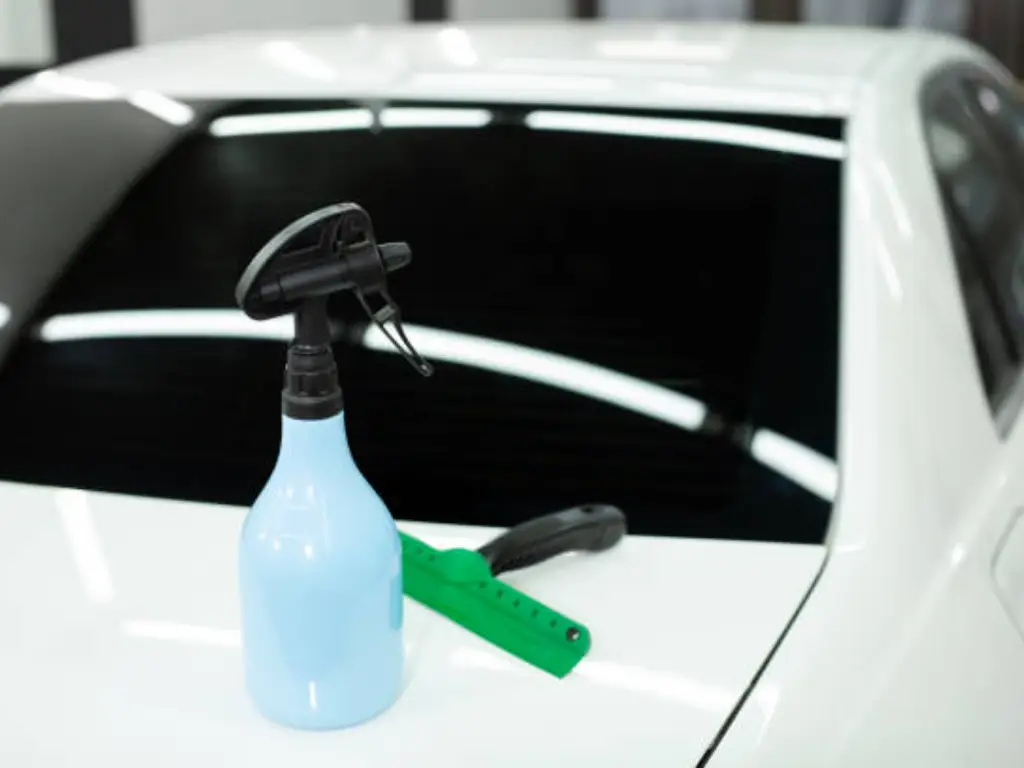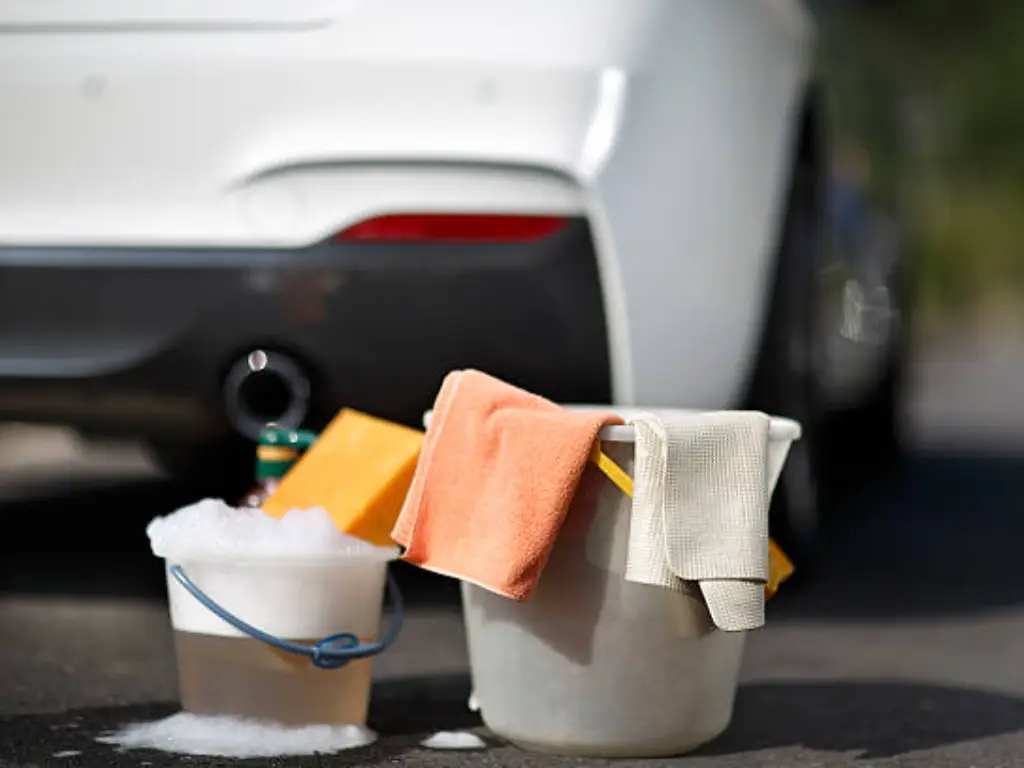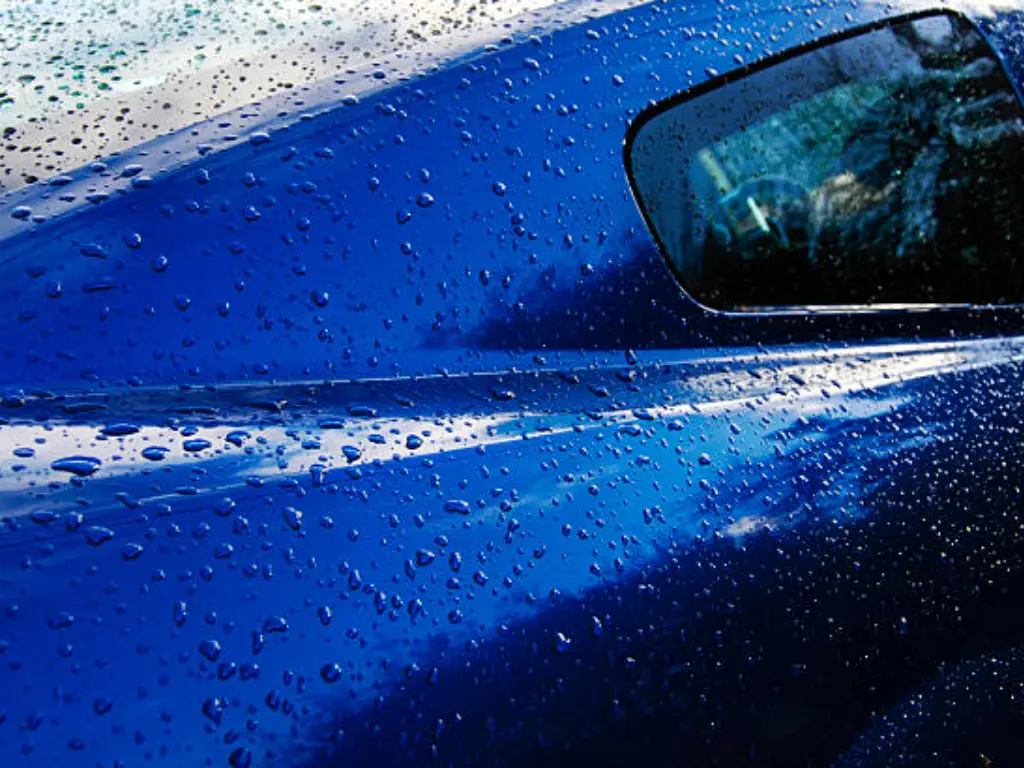You have decided to apply a ceramic coating to your car. That’s great. It’s a great idea, giving you protection from the weather and making your car stand out on the roads. However, a ceramic coating doesn’t guarantee your car will always be clean and safeguarded against environmental contaminants. It’s more like a top-quality sports outfit – it performs best when it’s well maintained. If you don’t maintain it properly, the shine will fade and the paint will not protect the car as well. Let’s look at how to maintain your ceramic coated vehicle so every ride is a success.
Understanding Your Ceramic Coating
A ceramic coating acts like a second layer of protection for your car’s paint. It is a liquid polymer, usually made from silicon dioxide, that bonds with the paint on the factory, making a protective layer over the clear coat. Water droplets roll off this layer and take dirt with them, making it very easy to clean. It gives better protection from UV rays, acid rain and small scratches.
Yet, many car owners mistakenly think that ceramic coatings do not need any maintenance. They’re not. They are easy to care for which is a key difference. Even though they are easier to use and more effective than regular wax, regular washing should be done and they should be hand washed on a regular basis. If you do not care for your ceramic coated vehicle, you will notice dirt sticking, water spots and the self-cleaning property reducing. Taking care of your coating helps it function at its best, lasts longer and keeps your car’s exterior looking brand new and shiny.

Essential Tools for a Flawless Wash
For the perfect wash, make sure you have the right tools:
- Two High-Quality Wash Buckets Made for cleaning cars and every one comes with a grit guard that catches dirt and helps avoid scratches.
- pH-Neutral, Wax-Free Car Wash Soap It is made for ceramic coatings and will not take away their hydrophobic qualities or leave any residue.
- Premium Microfiber Wash Mitts The mitts are soft and one is used for clean parts and the other for the wheels.
- Plush Microfiber Drying Towels or Car Dryer Makes sure the finish looks flawless and undamaged.
These tools ensure a safe, effective clean that preserves your ceramic coating.
Step-by-Step Pre-Wash Techniques
A proper pre-wash helps you keep swirl marks and scratches away. The main thing is to remove dirt before you touch the surface. Carry out these steps to ensure your clothes are properly and safely pre-washed.
- 1. Pre-Rinse with Pressure Washer Use a pressure washer to give your car a good initial rinse. This is a key part of the process to get rid of the biggest dirt, dust and grime on the car. Start from the highest point and let gravity carry the debris as you clean. Don’t forget to clean the areas around the tires and the wheel wells.
- 2. Apply Snow Foam Then, spray snow foam onto the car with a foam cannon that is attached to your pressure washer. The foam covers and softens the dirt on your car’s paint. Allow the foam to stay on the car for 5-10 minutes so it can clean the grime without drying in the shaded areas.
- 3. Rinse Thoroughly Again After the foam has finished, clean your car again, starting at the top and going down. Make sure to get rid of all the foam and dirt that has become loose during the foam dwell time.
This pre-wash process minimizes the need for harsh scrubbing later and ensures that your ceramic coating stays intact and protected throughout the wash.
The Two-Bucket Method Explained

This is the best way to prevent scratches caused by washing a ceramic coated vehicle. It is easy to do, yet it works very well.
To set it up, put your pH-neutral car wash soap into a bucket and mix it with water as the product directs. This is the container you use for washing. Only place clean water in the second bucket. This is where you put the water after you rinse your hands. It is important to have grit guards in both buckets to avoid scratches.
First, put your clean microfiber cloth or wash mitt into the wash bucket and fill it with soapy water. Clean one area of your car at a time, moving the cloth in a straight line, not in circles. After washing a part, immediately rinse your mitt in the “rinse” bucket, rubbing it against the grit guard to get rid of any dirt it picked up. Press out the water, then fill the sprayer again with fresh soapy water from the wash bucket and move on to the next section. This way, you are always using a clean mitt on your car, so dirt doesn’t get dragged over the paint. Rinse the areas you have cleaned as you move along or after washing a few sections, to avoid soapy water drying in any low areas.
Drying Your Ceramic Coated Car Safely
It is just as important to dry your car well as it is to wash it well. If you leave water to evaporate, especially if your water is hard, you might find yourself with tough-to-remove water spots on your ceramic coated vehicle.
After the final rinse, make sure to get rid of the water carefully and quickly. The most effective way is to use a car dryer or leaf blower. Not touching the car means no scratches and water is pushed out of all the nooks, so there are no drips. Start with the topmost layer and move down.
If you decide on towels, choose large and very soft microfiber drying towels. Place the towel over a part of the stain and blot it, not dragging it. Fold the towel regularly to let the clean and dry parts of the towel face outward. You should lift the water, not rub it. For the best outcome, you can use a drying aid or ceramic spray that works with ceramic protection; this helps the towel glide smoothly and can make the ceramic coating more water-repellent, maintaining the glossy finish.
Maintaining Your Coating’s Hydrophobic Power
Washing is only the beginning; real ceramic coating care means keeping up with maintenance. A hydrophobic coating is like a freshly waxed floor, but with time and use, it will lose its effectiveness.
- Use Ceramic Spray Detailers or Toppers You can keep and boost the hydrophobic qualities of your ceramic coating by using ceramic spray detailers or toppers. They are made to restore the coating, making it water-resistant and smooth. Use them after washing your car, before drying it or use them as a quick detailer in between washes. Always pick products that are marked as “ceramic coating safe” or “SiO2 infused” to avoid damage to your coating.
- Regularly Check Performance Check how well your coating is working. If you see that the water is not beading or sheeting as well as before, it may be time to use a maintenance spray. Inspections done regularly allow you to address issues before they become serious and keep the coating intact.
- Promptly Remove Contaminants If bird droppings, tree sap or bug residue are not cleaned off, they can quickly damage your ceramic coating. Because these contaminants are acidic, they can harm the surface of the stone with time. Always have a small detail spray and a microfiber cloth with you for easy cleaning when you’re out.
Using maintenance products and cleaning contaminants as soon as you notice them will keep your ceramic coating working well and protect your car for a long time.

Common Mistakes to Avoid (and Why)
Even if you are careful, it can still be simple for car owners to make mistakes that harm their ceramic protection. It is just as important to learn what not to do as it is to learn what to do.
Automated car washes can be very damaging to car paint. The strong brushes and abrasive cleaners in these washes will damage your car’s paint and coating, remove its water-repelling properties and reduce the car’s life. It’s similar to attempting to clean a soft silk garment with a hard wire brush. Refuse to do it. Ceramic coating products can be damaged by the chemicals used in some touchless car washes.
Dish soap and abrasive cleaners should not be used on your car’s paint. They can easily remove the protective coating. Abrasive cleaners may cause small scratches that reduce the shine of the surface. Make sure to use pH-neutral, ceramic coating safe soap when washing your car.
Washing your clothes in the sun or on a hot surface can cause serious damage. The water will dry so fast that it leaves behind water spots and streaks that are not easy to clean and can harm the coating. Wash your clothes in a shaded spot or when it is not too hot outside.
If you use dirty mitts or towels, it is like sanding your car’s paint. Dirt particles that are trapped can leave swirl marks and may cause scratches. Always clean your car cleaning tools before using them on your car. True car enthusiasts appreciate how much attention is given to the details. Sometimes, it’s smart to talk to professional detailers or take your car to a good auto salon for regular maintenance washes.
Ceramic Coating vs. Paint Protection Film (PPF)
People often mention ceramic coatings and Paint Protection Film (PPF) when talking about protecting a car’s paint. Both types of insurance are useful, but they are meant for different things, so knowing the difference helps you pick the best coverage for your vehicle.
As we have seen, ceramic coatings form a tough, water-repelling layer that sticks to the paint. They are great at making surfaces shine, keeping water and dirt away and protecting against stains caused by acid rain and UV rays, thanks to their hydrophobic properties. Their smooth and non-stick surface makes car cleaning much simpler and the ceramic protection remains for a long time. Quartz coatings are available in several grades, each with its own level of toughness and durability.
Paint Protection Film, by contrast, is a thicker and transparent urethane film that covers the car’s paint. PPF helps protect your car from road debris, scratches, abrasions and small scuffs. A lot of modern PPFs are designed to heal themselves, so minor scratches and swirl marks disappear when the film is heated. It provides strong protection against things like road salt. It is sometimes necessary to correct the paint before installing PPF for the best results.

Here’s a quick comparison:
| Feature | Ceramic Coating | Paint Protection Film (PPF) |
| Main Benefit | Chemical resistance, UV protection, hydrophobicity, ease of cleaning, glossy finish | Physical impact protection (chips, scratches, abrasions), self-healing properties, stain resistance |
| Thickness | Microns (very thin, almost invisible) | Several Mils (much thicker, noticeable on edges if not installed perfectly) |
| Protection Type | Chemical bond to paint, surface protection | Physical barrier over paint |
| Longevity | 2-5+ years (requires ceramic coating maintenance) | 5-10+ years (highly durable) |
| Cost | Generally less expensive for initial application | Higher initial investment |
| Best For | Ease of maintenance, deep gloss, chemical resistance | Preventing physical damage from road hazards and impacts |
The best way to protect your car is by using ceramic protection and PPF together. Using a ceramic coating product on top of PPF gives you the best results. The PPF’s strong protection against scratches and abrasions, along with the ceramic coating’s improved water resistance, resistance to chemicals and simple cleaning.
Because of this, your car is protected from physical damage and is also very easy to clean and maintain.
At ClearPro, we are knowledgeable about paint protection science. The ClearPro Paint Protection Film acts as a barrier, protecting your vehicle’s paint from the wear and tear of driving. If you use a good ceramic coating product, you’ll have a strong team that will keep your car safe and looking great for a long time. Professional auto salons or detailers are the best choice for getting the best results.








